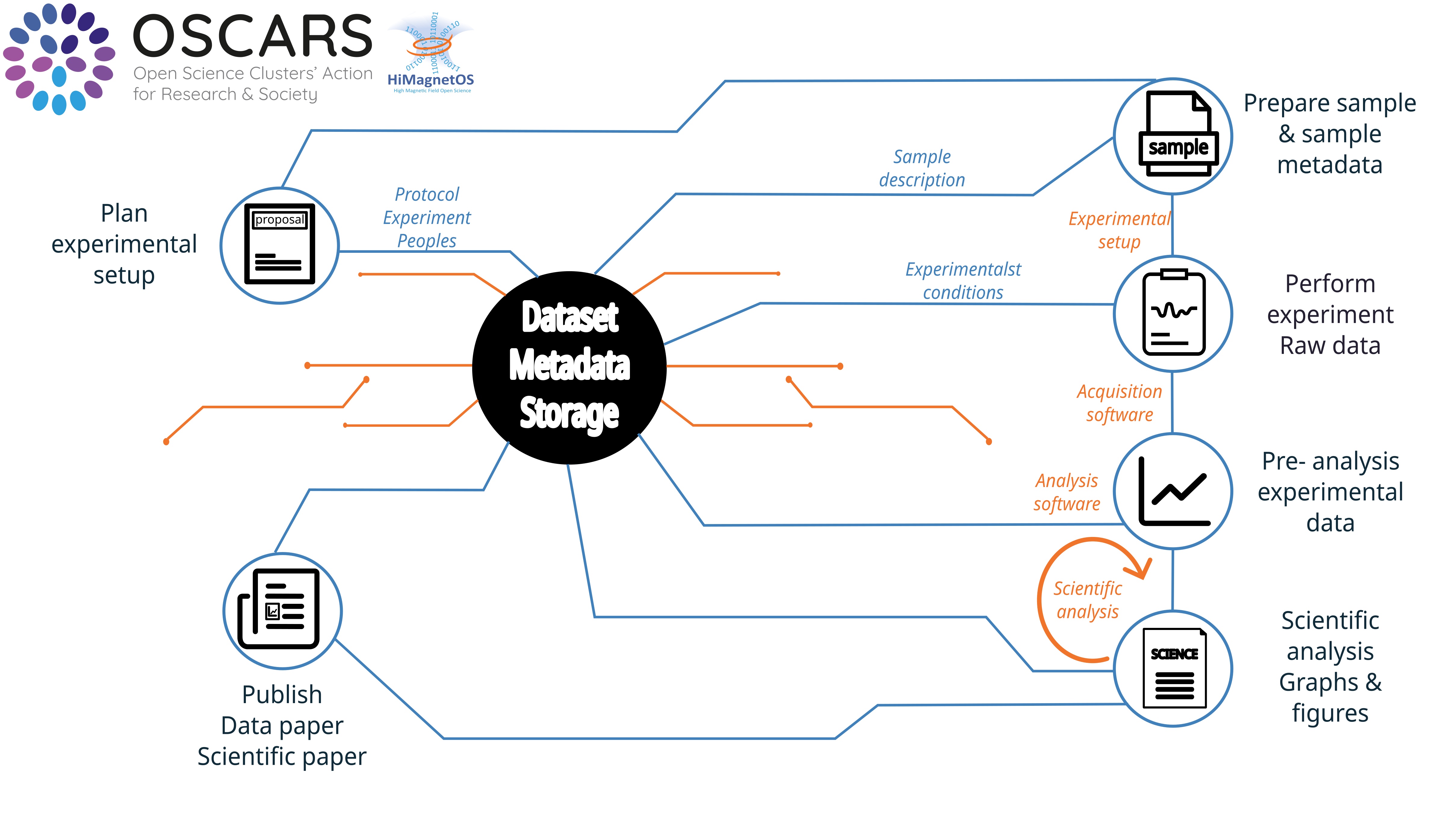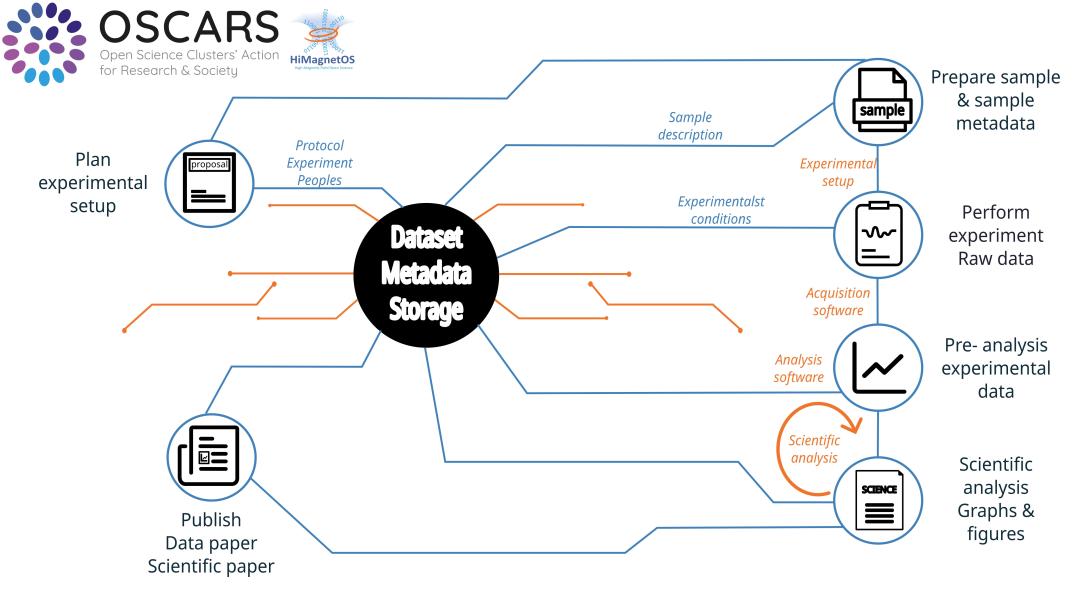Science clusters

Summary
The HiMAGNETOS project aims to advance the development of standards and tools to reduce the obstacles for researchers to make their experimental data FAIR. It will do so by enhancing open access to high magnetic field research data generated at the Laboratoire National des Champs Magnétiques Intenses (LNCMI) within the EOSC framework. The project strives to establish comprehensive standards, develop specialised tools, and create a centralised data repository that will facilitate the production of FAIR data. By streamlining these processes, the project aims to reduce barriers for researchers, ensuring that experimental data can be easily shared, accessed, and reused, thus promoting a more collaborative research environment.

Challenge
Open Science project, Open Science Service, Cross-domain/Cross-RI
High magnetic field research plays a vital role in advancing various scientific disciplines, yet access to related data is often restricted. While some open data initiatives, such as the NHMFL MagLab in the USA, exist, they primarily promote generic frameworks that do not adequately address the specific requirements of high magnetic field experiments. This lack of targeted support creates significant barriers for researchers who wish to share their findings or access critical experimental data. Consequently, the potential for collaboration and innovation in this field is stifled, highlighting the urgent need for a structured approach to improve data accessibility.
Solution
HiMAGNETOS will implement a common data management plan derived from insights gained in the ISABEL H2020 project, which focuses on improving the sustainability of the EMFL. The project will adapt existing frameworks, such as the DataCite Metadata Schema and Nexus Format, to meet the unique challenges posed by high magnetic field conditions. A central data repository will be established for both in-house and external users, complete with defined curation policies and uploading procedures. Additionally, the project will link research data to the original experimental proposals, enhancing data quality and usability by providing context, such as magnetic field homogeneity and other facility-related parameters. This comprehensive approach aims to create a robust data ecosystem that supports diverse research needs.
Moreover, the LNCMI has developed, over the years, many data reduction software for each kind of high field experimental techniques. These software packages allow reading the raw data from the acquisition systems, adjust reduction parameters and save the reduced data and some metadata in a user-friendly format. To ensure data reuse and interoperability, these software packages will be made open source or available as an online notebook.
Scientific Impact
The advancements made through the HiMAGNETOS project will significantly enhance collaboration and reproducibility in high magnetic field research. By making data and tools openly available, the project will not only improve the accessibility of high-quality experimental data but also set a precedent for future initiatives within the European Magnetic Field Laboratory (EMFL) community. HiMAGNETOS is envisioned as a pilot phase toward the broader integration of EMFL services into the EOSC, fostering a culture of Open Science in the field. Ultimately, HiMAGNETOS will empower researchers to build upon existing data, leading to innovative discoveries and a deeper understanding of high magnetic field phenomena.
Principal investigator

N. Bruyant and C. Warth-Martin are in charge of user access management of the two LNCMI High magnetic field facilities in Grenoble and Toulouse for more than a decade. They created the web-based application for experimental proposal submission and their evaluation by an external European selection committee. Then they coordinate the proposal’s planification, technical and administrative resources and reporting. C. Warth-Martin is also responsible for financial planning of the electricity costs. N. Bruyant assists users as a local contact during the experiments.


